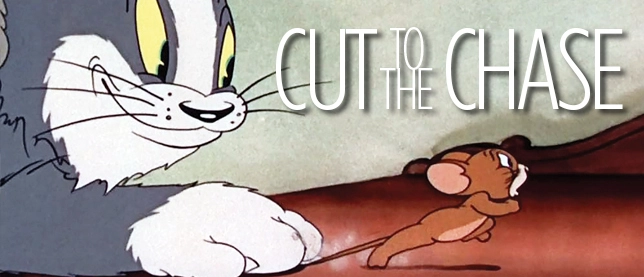On Feb. 10, 1940 — 85 years ago Monday — the first Tom & Jerry cartoon short and the first cartoon directed by the soon-to-be- famous team of William Hanna and Joseph Barbera was released in theaters.
The cat wasn’t yet named Tom. The mouse wasn’t yet named Jerry. And the cat-and-mouse chase storyline wasn’t intended to be followed by a series of cartoons featuring the both of ’em.
And the short certainly wasn’t aimed at earning a nomination for an Academy Award. But “Puss Gets the Boot” did all of these things.
A Dynamic Duo Working For MGM's Animation Studio
In June 1937, 26-year-old animator and scriptwriter Joseph Barbera began working for the animation unit at MGM studios — at the time, the largest studio in Hollywood. Barbera and his colleagues were encouraged to come up with ideas for original animated shorts.
In those days, these “cartoons” were shown along with previews and newsreel stories before feature films in theaters.
Barbera teamed up with animator and director William Hannah, 27, and together, they came up with a conflict between a dog and a fox. Along the way, that idea morphed into a cat and mouse.
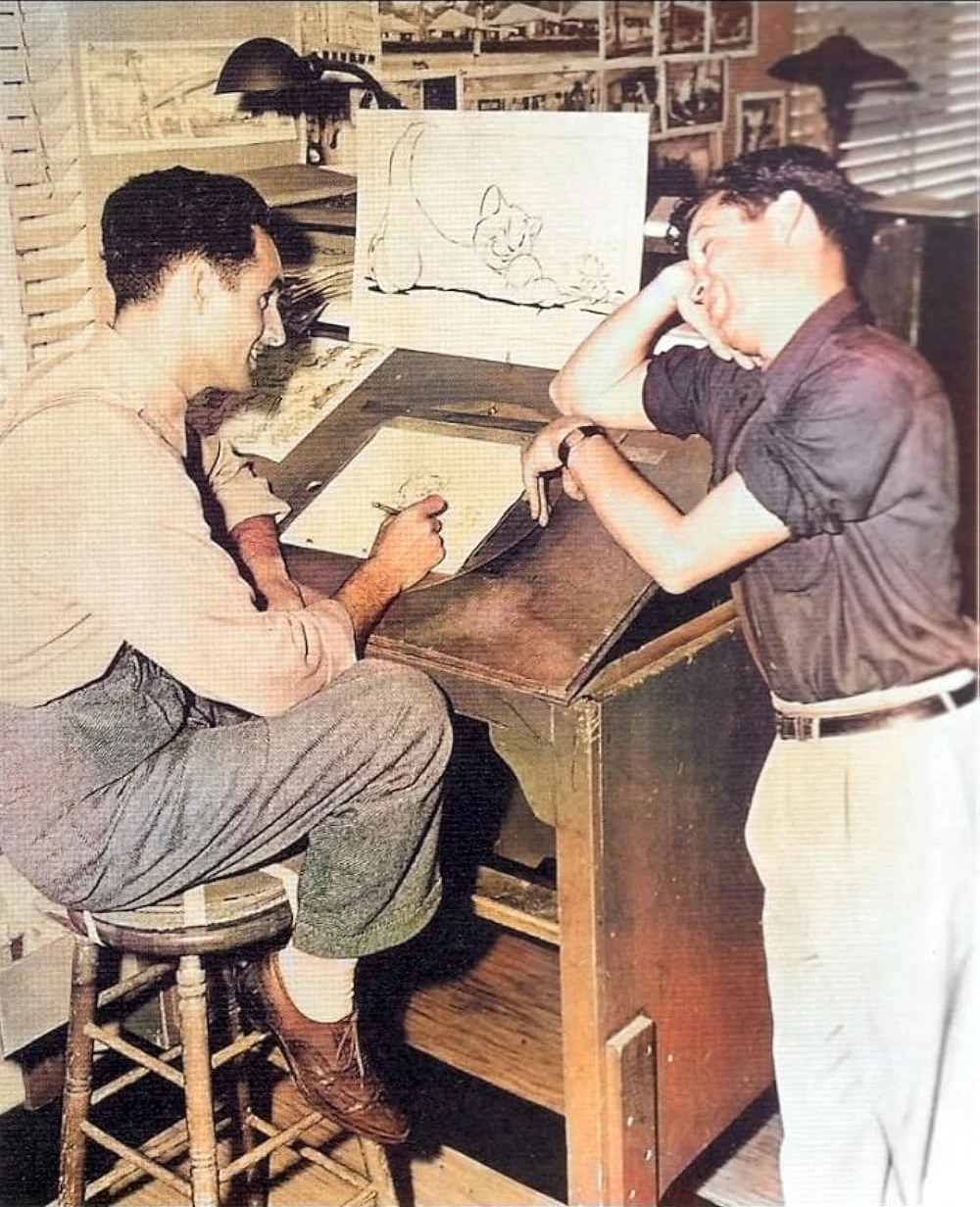
Hanna and Barbera ended up with a story about a house cat who torments a mouse until the mouse discovers he can get the cat banished outside if the maid thinks the cat is breaking stuff during their chase. They gave away the ending of their story with the title they chose: “Puss Gets the Boot.”
Their producer wasn’t very enthusiastic about their story but greenlit the project anyway. The result was released in theaters on Feb. 10, 1940. Hanna and Barbera were assigned to other work.
Much to everyone’s surprise, audiences loved “Puss Gets the Boot.” Viewers wrote the studio asking for more cartoons featuring the cat and mouse. And then the short earned an Academy Award nomination. Hanna and Barbera were immediately pulled off of their assignments and given the task of making more cat-and-mouse cartoons.
And they did, making 113 more over 15 years — earning a total of 12 Oscar nominations and seven wins — before MGM shut down its animation operation in 1958.
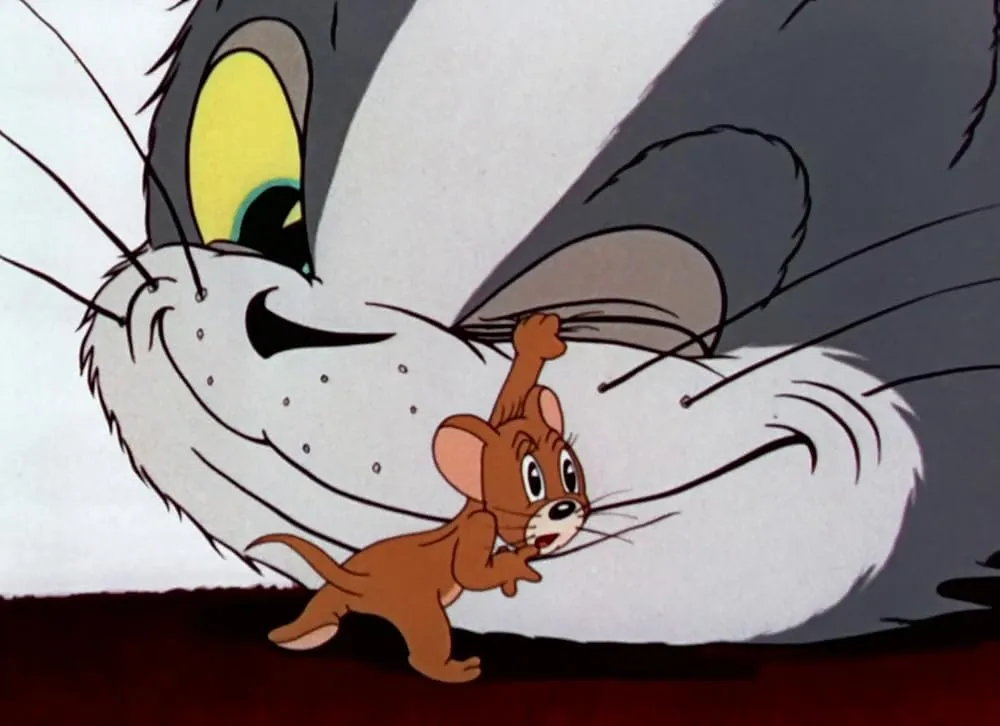
Originally, the cat was named Jasper — and called by that name in “Puss Gets the Boot.” Animators called the unnamed mouse character “Jinx.” When MGM asked for more cat-and-mouse shorts, Hanna and Barbera held an in-house contest to rename the characters. Animator John Carr won $50 for his suggestion of Tom and Jerry.
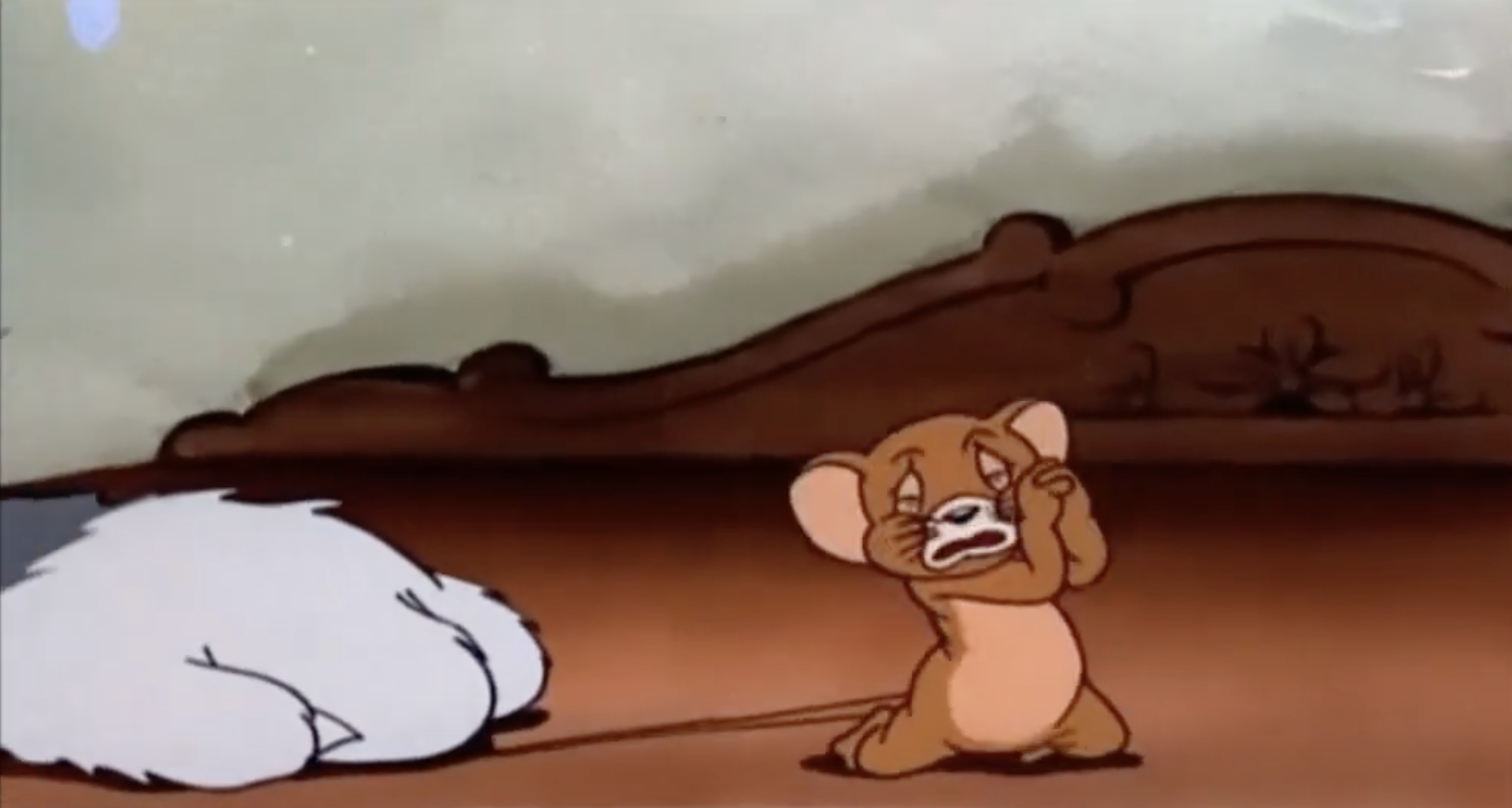
At one point in the short, Jasper catches Jinx by the tail — seen in the photo at the top of this page. Jinx, realizing he’s unable to escape, begins to pray in what sounds like a high-pitched squeak. In fact, though, that’s the sped-up voice of Hanna, praying: “Now I lay me down to sleep, I hope and pray my soul he’ll keep...”
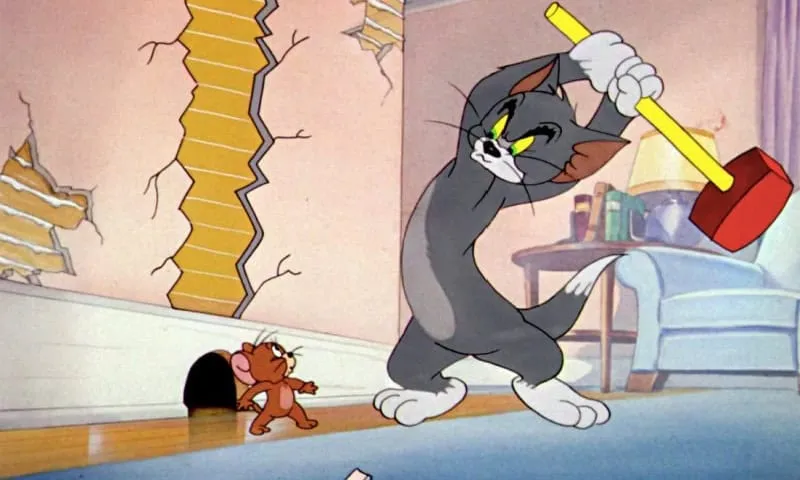
Over time, Hanna and Barbera streamlined the look of Tom, drawing him a little less scruffy and made him almost exclusively bipedal. Jerry became just a bit thinner but stayed mostly the same, showing great strength for his size: He’s able to lift heavy objects like anvils, for example, with ease. Both characters appear to be virtually indestructible.
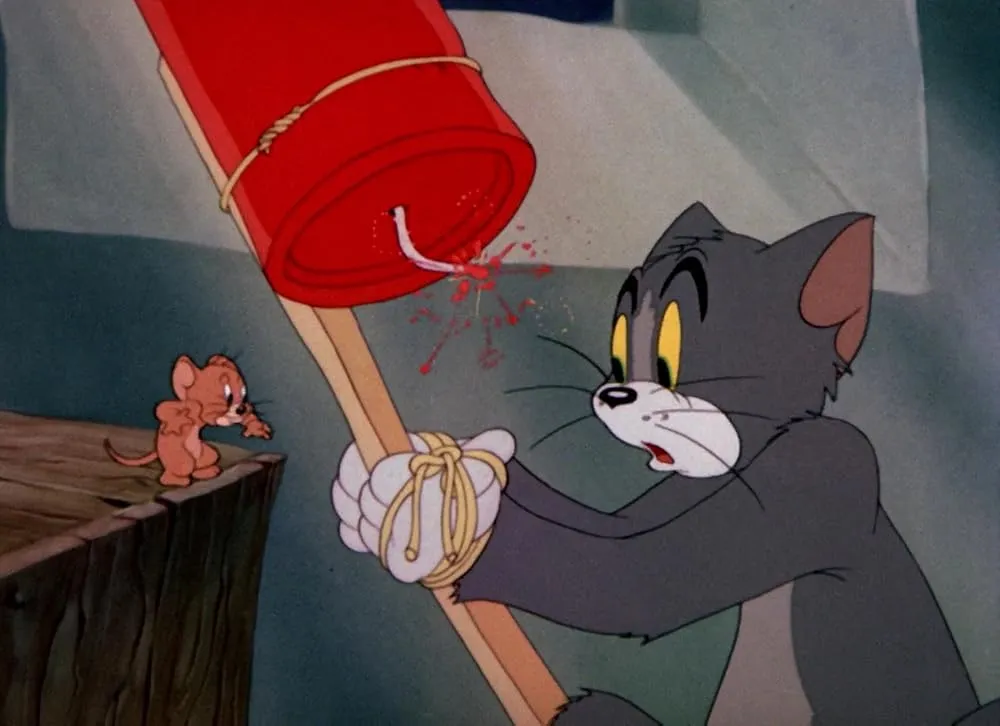
Also over time, Tom & Jerry shorts became more violent. Over the years, Jerry would slice Tom in half, slam his head in windows or doors, and stuff Tom’s tail into a waffle iron and an electric socket. Tom would pursue Jerry with axes, pistols, explosives, traps and even poison. In a 1952 parody of “The Three Musketeers,” Tom is executed in a guillotine.

Neither Tom nor Jerry speaks much in their Hanna Barbera cartoon career, with a few notable exceptions. Tom sings or speaks with a heavy fake French accent when wooing female cats. And in one 1956 short, Jerry narrates the story of Tom’s pursuit of a female cat. Jerry’s voice in that story was supplied by veteran animation voice actor Paul Frees.
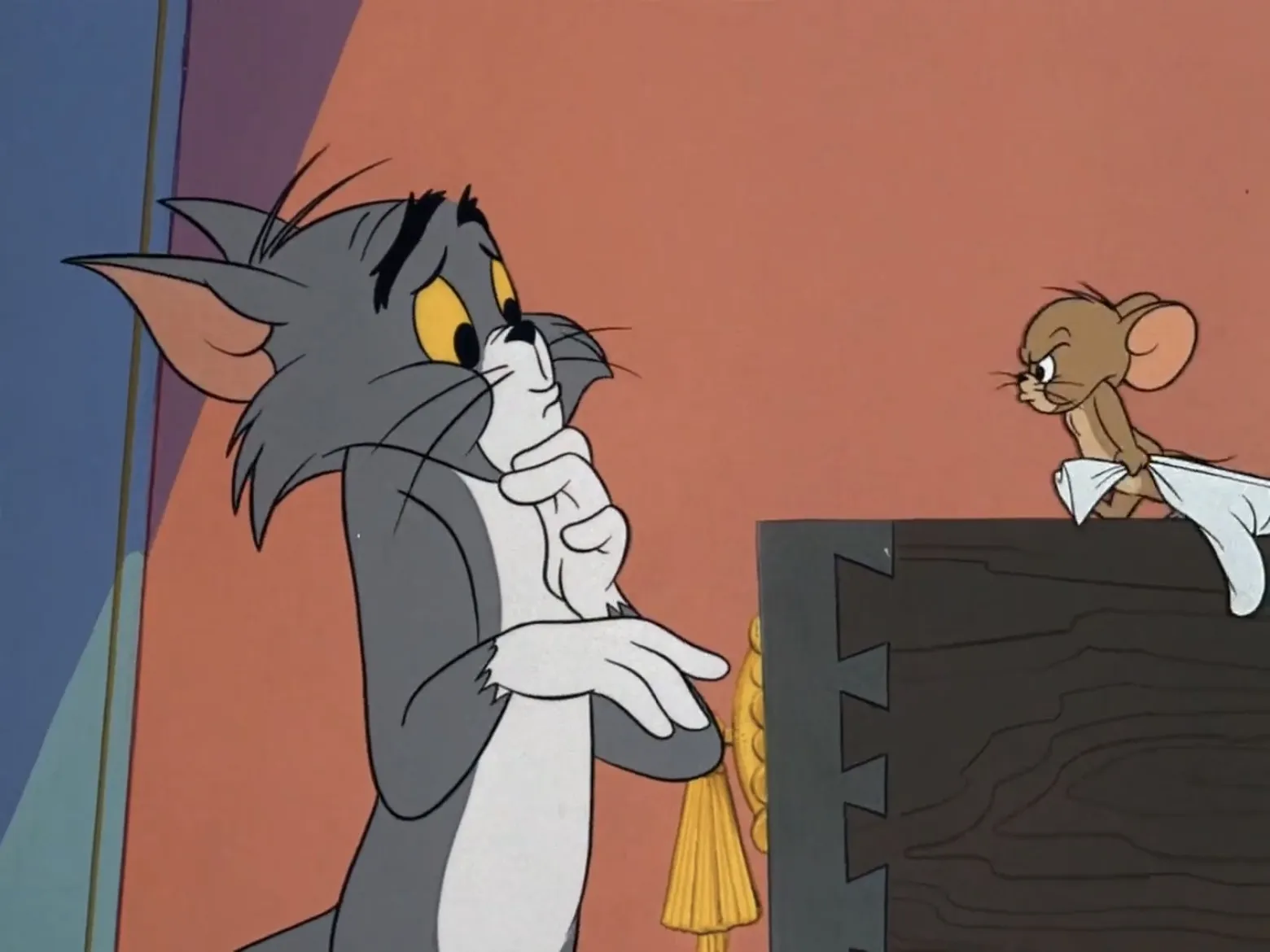
After MGM shut down its animation operation in 1958, it farmed out production of 13 more Tom and Jerry shorts to a studio in Czechoslovakia. In 1963, longtime Warner Bros. animator Chuck Jones was hired to create another 34 shorts over the next five years. His versions of Tom and Jerry were slightly more emotive than they had been previously.

Hanna and Barbera founded their own studio and began making low-cost animated shorts for Saturday morning television. Among its successes: Huckleberry Hound, Yogi Bear, “The Flintstones,” “The Jetsons,” “Scooby-Doo” and “Super Friends.” In 1991, the studio was bought by Ted Turner and its work featured on the Cartoon Network.
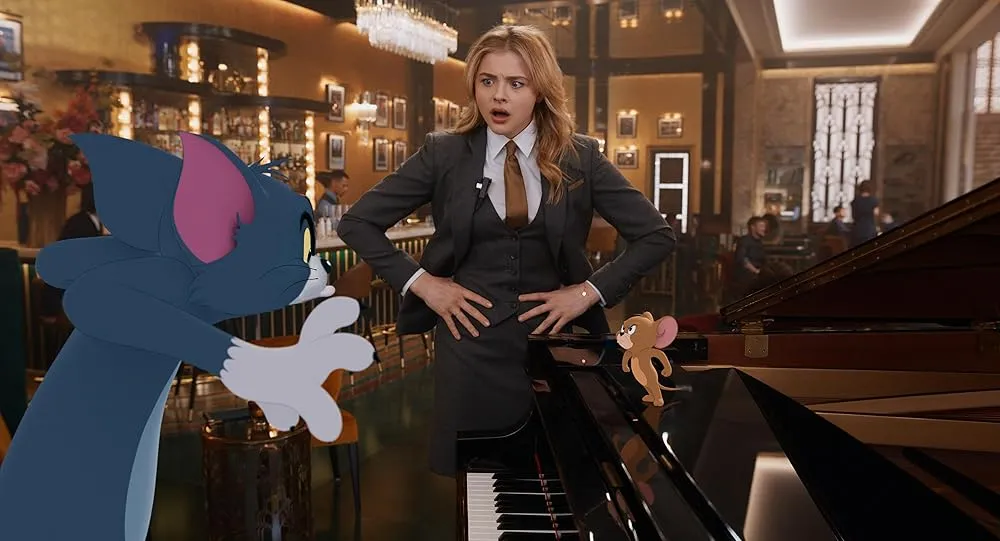
In 1975, Hanna and Barbera were hired to create more Tom and Jerry shorts for Saturday Morning television. By 1990, Tom and Jerry had been turned into younger versions of themselves. The duo have also starred in a number of direct-to-video films and two feature films — most recently in 2021 co-starring Chloë Grace Moretz, Michael Peña and Colin Jost.
Tom and Jerry's production and academy awards won throughout the years:

